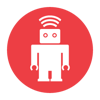Mobile App Development for Healthcare Company
- Mobile App Development
- $1,000,000 to $9,999,999
- Jan. 2022 - Ongoing
"The most impactful is thoughtbot's processes, collaboration, and guidance around product development."
- Other industries
- San Antonio, Texas
- 501-1,000 Employees
- Online Review
- Verified
thoughtbot has developed a mobile application for a healthcare company. After discussing the project details and goals, the team has created a roadmap, designs, and solutions to issues.
thoughtbot's final mobile application has thrilled the client and received positive user feedback because of its experience. The team maintains excellent communication, tracking, and planning of the project on Slack and Trello while continuously enhancing the platform. Their hard skills stand out.

